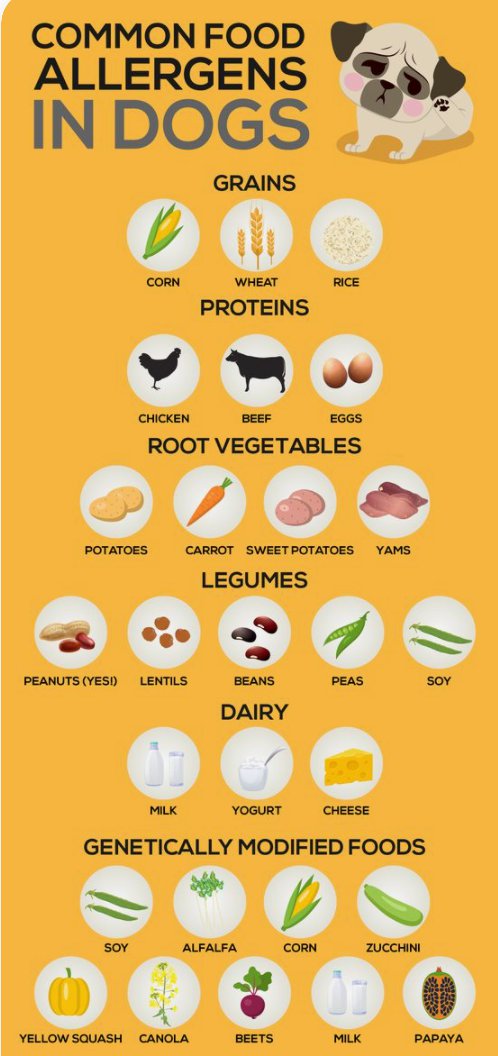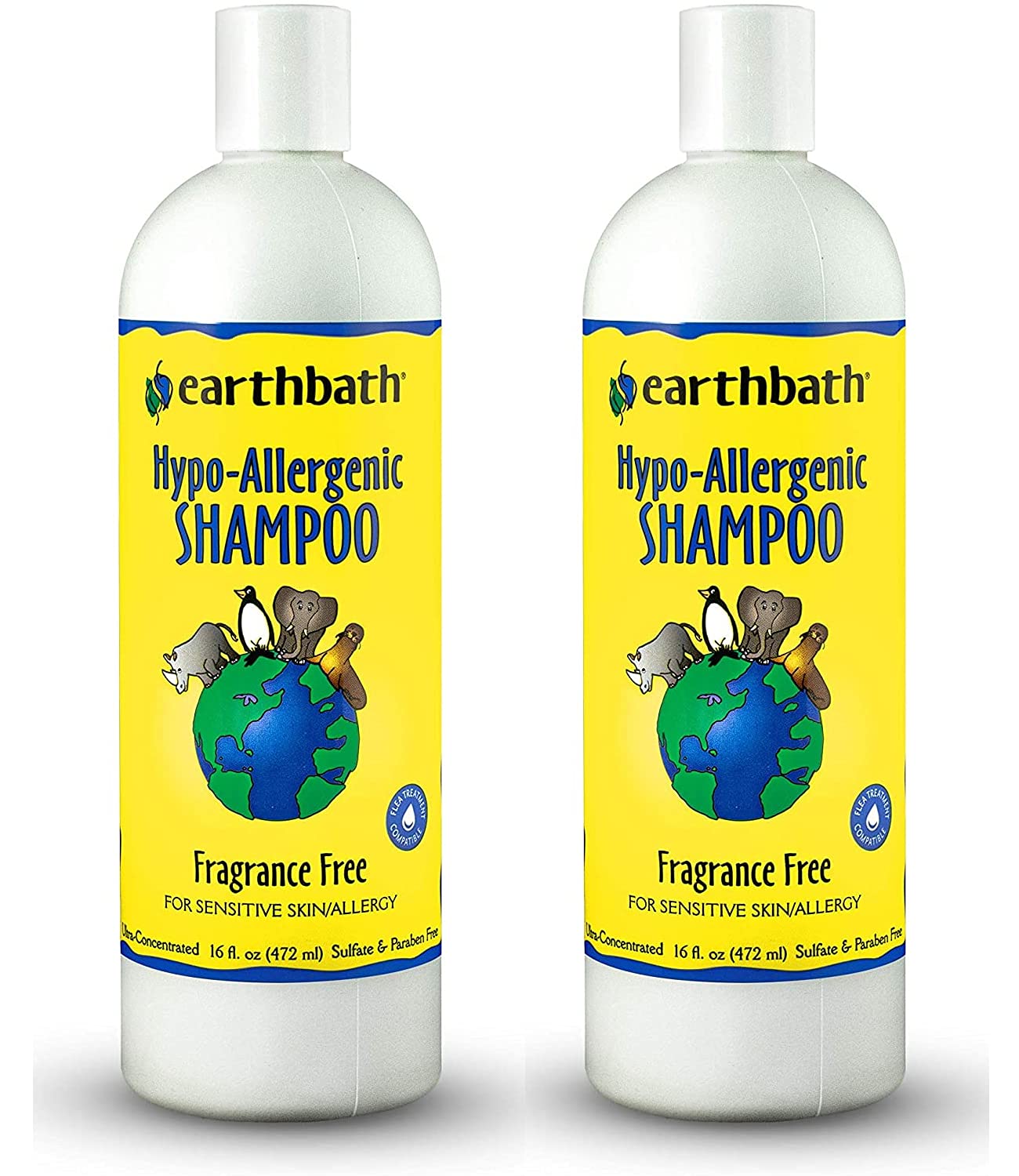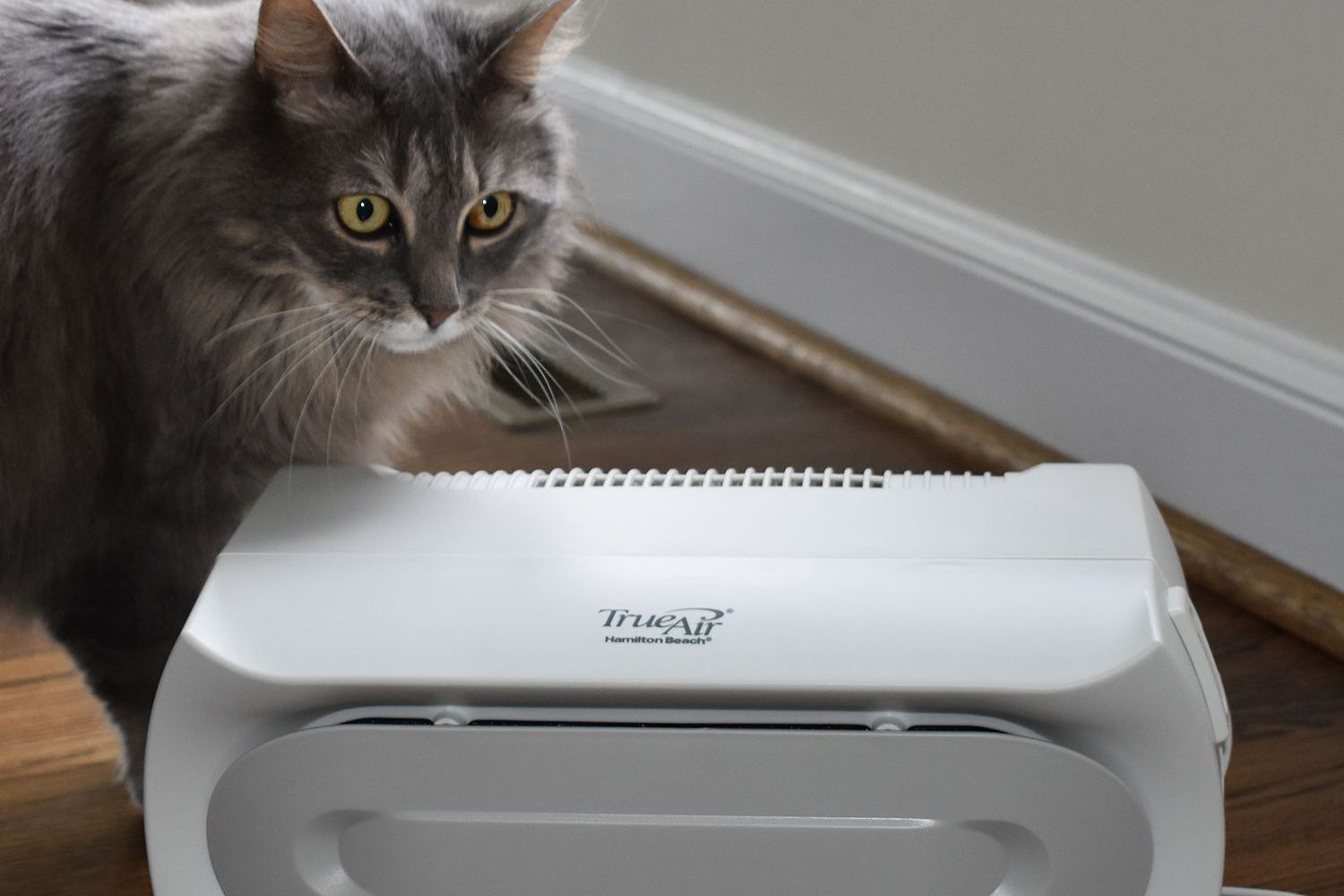Key Takeaways
-
Hypoallergenic shampoos often contain gentle, natural ingredients such as oatmeal and aloe vera that soothe sensitive skin.
-
Specialty foods tailored for pets with allergies can significantly reduce symptoms by eliminating common allergens from their diet.
-
Air purifiers designed for pet owners can help reduce airborne allergens, providing a cleaner environment for both pets and humans.
-
Recognizing the signs of allergies in pets is crucial for early intervention and effective management of their symptoms.
-
Routine home cleaning and creating an allergen-free zone can help minimize exposure to allergens and promote a healthier living space for your pet.

“foods are making allergies for dogs …” from www.quora.com and used with no modifications.
Easing Your Pet’s Allergies: A Pet Owner’s Guide
If you’ve ever watched your furry companion suffer through allergy symptoms, you know the helplessness of not knowing how to provide relief. But fret not, because there are ways to alleviate their discomfort and improve their quality of life. From selecting the right hypoallergenic shampoo to choosing specialty foods and investing in an air purifier, this guide will walk you through creating an allergen-reduced haven for your rescue pet.
Finding Relief for Sensitive Skinned Companions
When it comes to sensitive skin, not all pet products are created equal. Hypoallergenic pet products are specially formulated to be gentle on the skin and reduce the risk of allergic reactions. They typically avoid harsh chemicals, fragrances, and dyes that can exacerbate your pet’s allergies. But it’s not just about what’s not in these products—it’s also about what is. Ingredients like hydrolyzed protein, ceramides, and fatty acids can help repair the skin’s barrier, making your pet less susceptible to allergens.
Most importantly, hypoallergenic products can be a game-changer for pets who have been through a lot, like rescue animals. These pets often come from environments where they’ve been exposed to a variety of allergens, and their immune systems may be more reactive as a result.
Recognizing Signs of Allergies in Rescue Pets
Before diving into the world of hypoallergenic products, it’s essential to recognize the signs of allergies in your pet. Look out for excessive scratching, biting, or licking of the skin, as well as redness, swelling, or hair loss. Some pets might also experience sneezing, coughing, or watery eyes, similar to humans with allergies. If you notice these symptoms, it’s time to act.
Because your rescue pet may not have had the best start in life, they may be more prone to allergies. Their previous exposure to poor diets, stress, and unsanitary conditions can leave them vulnerable. Therefore, understanding their past and current symptoms is crucial in providing the best care.

“earthbath, Hypoallergenic Dog Shampoo …” from www.amazon.com and used with no modifications.
The Soothing Power of Hypoallergenic Shampoos
A bath with the right shampoo can do wonders for a pet with allergies. Hypoallergenic shampoos are designed to cleanse the skin and fur without causing irritation. These shampoos often contain natural soothing agents such as oatmeal, aloe vera, or chamomile. Not only do they clean, but they also moisturize and repair the skin, providing immediate relief for an itchy pet.
It’s important to choose a shampoo that is free of potential irritants. Avoid products with parabens, sulfates, and artificial fragrances, as these can trigger allergic reactions. Instead, opt for shampoos with a short list of recognizable ingredients, and if possible, select those with a pH balanced specifically for pets.
Ingredients to Look for in Hypoallergenic Shampoos
When selecting a hypoallergenic shampoo for your pet, focus on finding products that contain:
-
Oatmeal: Known for its soothing properties, oatmeal can relieve itchiness and calm inflamed skin.
-
Aloe Vera: This natural healer provides cooling relief and hydrates the skin.
-
Omega-3 and Omega-6 Fatty Acids: These are vital for maintaining healthy skin and can help reduce inflammatory responses.
-
Vitamin E: An antioxidant that supports skin health and promotes healing.
By choosing shampoos with these ingredients, you’re not just cleaning your pet; you’re providing them with a therapeutic bath that helps heal their skin from the inside out.
Step-by-Step Guide to Bathing Your Allergic Pet
Bathing your pet with allergies doesn’t have to be a daunting task. Follow these simple steps to ensure a safe and soothing experience:
-
Start by gently brushing your pet to remove any loose fur or debris.
-
Wet their coat with lukewarm water, being careful not to use water that’s too hot or too cold.
-
Apply a generous amount of hypoallergenic shampoo, working it into a lather while massaging their skin.
-
Let the shampoo sit for a few minutes to allow the ingredients to work their magic.
-
Rinse thoroughly with lukewarm water, ensuring all the shampoo is washed out to prevent residue buildup.
-
Pat your pet dry with a towel, or use a low-heat hairdryer if they’re comfortable with it.
Remember, regular baths with the right shampoo can significantly reduce your pet’s allergy symptoms. But be mindful not to overdo it—too frequent bathing can strip the skin of its natural oils and lead to dryness and irritation.
Nourishment That Comforts: Specialty Foods for Allergic Pets
Just like humans, pets can have food allergies that cause discomfort and health issues. These allergies often manifest as skin irritations, digestive problems, or chronic ear infections. The good news is, specialty foods formulated for allergic pets can provide much-needed relief. These diets are crafted to eliminate common allergens like beef, dairy, and wheat, and are often made with novel proteins and hypoallergenic carbohydrates.
Understanding Food Allergies and Intolerances in Pets
Food allergies in pets occur when their immune systems mistakenly identify a particular food protein as harmful, leading to an allergic reaction. Intolerances, on the other hand, don’t involve the immune system but still cause digestive upset. Both can make your pet miserable. The key to managing these conditions is identifying the offending ingredients and switching to a diet that avoids them.
To get to the bottom of your pet’s allergies, your vet may suggest an elimination diet, where you’ll feed your pet a simplified diet of foods they’ve never eaten before. Over time, you’ll reintroduce foods to see which ones trigger a reaction. This process can pinpoint specific allergies, guiding you to the right specialty food.
Choosing the Right Specialty Food
When it comes to selecting specialty food for your allergic pet, here’s what to consider:
-
Single Protein Source: Look for foods that contain a single protein source, preferably one that your pet has never had before.
-
Limited Ingredients: Fewer ingredients mean fewer chances of an allergic reaction.
-
Grain-Free Options: Many pets are allergic to grains, so grain-free foods can be a safer bet.
-
Natural Preservatives: Avoid foods with artificial preservatives, which can aggravate allergies.
By carefully selecting a specialty food based on these criteria, you’ll not only ease your pet’s allergy symptoms but also provide them with a nutritious diet that supports their overall health.

“The 8 Best Air Purifiers for Pets of …” from www.thesprucepets.com and used with no modifications.
Purifying Your Air: Reducing Allergens at Home
Did you know the air inside your home can be up to five times more polluted than the air outside? This can be especially problematic for pets with allergies. Airborne allergens like pollen, mold, and dust mites can trigger allergic reactions. Air purifiers can help by removing these allergens from the air, making your home a more comfortable environment for your pet.
How Air Purifiers Can Benefit Your Allergic Pet
Air purifiers work by pulling air through filters that capture allergens and other pollutants. The result is cleaner air that’s circulated back into the room. For pets with allergies, this can mean fewer symptoms and less irritation. But not all air purifiers are created equal, and some are better suited to tackle pet-related allergens than others.
For the best results, choose an air purifier with a HEPA filter, which is designed to capture particles as small as 0.3 microns. This includes most allergens that affect pets. Additionally, some air purifiers have features like activated carbon filters that can remove odors, which is a bonus if you’re dealing with pet smells.
Selecting an Air Purifier Suited to Pet Allergies
To choose an air purifier that’s right for your home and your allergic pet, consider the following:
-
Size of the Room: Make sure the air purifier is rated for the size of the room where your pet spends most of their time.
-
Type of Filter: Opt for a purifier with a true HEPA filter for maximum allergen removal.
-
Filter Replacement Indicator: This feature will tell you when it’s time to change the filter to maintain effectiveness.
-
Noise Level: A quiet air purifier is important, especially if it will be running in a room where your pet sleeps.
With the right air purifier, you can create a cleaner, more allergen-free space for your pet to enjoy.
Living with Allergies: Daily Management and Prevention
Managing your pet’s allergies is an ongoing process that requires daily attention. By taking proactive steps, such as introducing pet-safe plants, you can significantly reduce allergens in your home and help your pet live a more comfortable life.
Creatively Structuring a Pet-Friendly Allergen-Free Zone
One effective strategy is to create an allergen-free zone in your home. This could be a room where your pet can retreat to when their allergies flare up. Keep this area clean and free of common allergens like dust and pet dander. Use hypoallergenic bedding and wash it regularly in hot water to kill any dust mites.
Besides that, consider using an air purifier in this space and avoid using any cleaning products or air fresheners that contain chemicals or fragrances. By creating a safe haven, you give your pet a place to relax without the threat of allergens.
Routine Home Cleaning Habits to Reduce Allergens
Regular cleaning is crucial in a home with an allergic pet. Here’s a simple routine to follow: consider incorporating habits to reduce allergens to ensure your pet’s environment is as allergy-friendly as possible.
-
Vacuum at least twice a week with a vacuum cleaner equipped with a HEPA filter.
-
Dust surfaces with a damp cloth to avoid spreading dust into the air.
-
Wash your pet’s bedding and toys regularly.
-
Keep your pet groomed to reduce the amount of dander they shed.
By incorporating these habits into your routine, you’ll help keep allergens at bay and make your home a more comfortable place for your allergic pet.
Routine Home Cleaning Habits to Reduce Allergens
Keeping your home clean is more than just about aesthetics; it’s a vital part of managing your pet’s allergies. Dust, pollen, and dander can accumulate in your home and exacerbate your pet’s symptoms. But with a consistent cleaning routine, you can minimize these allergens and create a healthier environment for your furry friend.
Start with the basics: vacuum your floors regularly using a vacuum equipped with a HEPA filter to trap allergens effectively. When dusting, use a damp cloth to prevent particles from becoming airborne. Additionally, washing your pet’s bedding and toys weekly can significantly reduce the presence of allergens. And don’t forget about your pet’s grooming needs—regular brushing can decrease the amount of dander they shed.
FAQs
As a pet owner, you likely have questions about managing your pet’s allergies. Here are some answers to common queries, including tips on introducing your rescue into multi-dog households.
How often should I bathe my pet with hypoallergenic shampoo?
Bathing frequency can vary depending on your pet’s specific needs. Generally, bathing your pet once every 4-6 weeks with a hypoallergenic shampoo can help manage allergy symptoms. However, it’s crucial to consult with your veterinarian, as they can provide guidance tailored to your pet’s condition and skin type.
Can hypoallergenic food cure my pet’s allergies?
While hypoallergenic food is designed to minimize the risk of allergic reactions, it is not a cure for allergies. Instead, it can help manage symptoms by eliminating common allergens from your pet’s diet. Always work with your veterinarian to identify the best dietary options for your pet’s unique needs.
Are air purifiers safe for pets?
Air purifiers are generally safe for pets and can be particularly beneficial for those with allergies. To ensure safety and effectiveness, choose an air purifier with a true HEPA filter and avoid models that produce ozone or use ionizers, as these can be harmful to pets.
What are common signs of allergies in pets?
Common signs of allergies in pets include persistent scratching, licking, or biting at their skin, redness or inflammation, chronic ear infections, sneezing, coughing, and watery eyes. If you notice these symptoms, it’s essential to consult with your veterinarian for proper diagnosis and treatment.
How can I tell if my pet’s allergies are improving?
You’ll know your pet’s allergies are improving if you observe a decrease in scratching, less redness and irritation on their skin, and an overall happier demeanor. It’s important to monitor your pet’s behavior and physical symptoms closely and maintain regular veterinary check-ups to track their progress.
In conclusion, managing your pet’s allergies requires a multifaceted approach that includes the use of hypoallergenic shampoos, specialty foods, air purifiers, and a consistent cleaning routine. By understanding the signs of allergies and taking proactive steps to reduce allergens in your home, you can provide your pet with lasting relief and a better quality of life. Remember, working closely with your veterinarian is key to developing an effective allergy management plan for your beloved companion.
For pet owners with rescue animals suffering from allergies, it’s important to consider hypoallergenic shampoos, specialty foods, and allergen-reducing air purifiers to create a comfortable environment for your furry friends.


